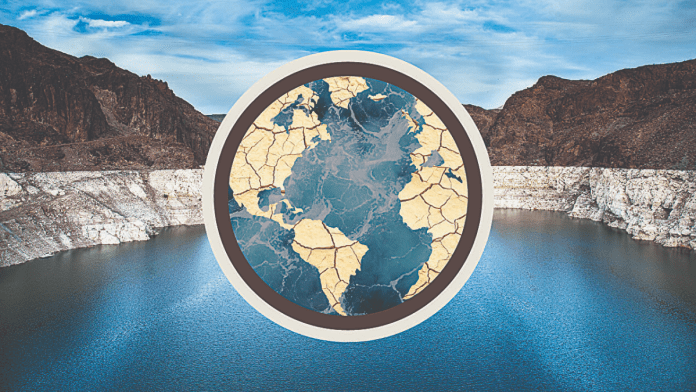🕒 Last updated on July 26, 2025
Across the world, something alarming is happening beneath our feet and around us. Freshwater—what we rely on for drinking, farming, and daily life—is disappearing faster than ever before.
The Hidden Crisis Behind Drying Lands
Scientists now say that we’re not just seeing local droughts or small changes. Instead, the entire planet is going through a massive shift, one that is drying up the continents and sending more water into the oceans.
The problem begins with rising global temperatures. As the Earth gets hotter, more water evaporates into the air. At the same time, people in many regions are pumping groundwater from underground aquifers at increasing rates to keep up with growing water needs. This double pressure—more evaporation and more groundwater extraction—is causing a dangerous trend called “continental drying.”
This means that freshwater is leaving the land and ending up in the seas. The result? Less water available for farming, drinking, and everyday use in many parts of the world. And as freshwater moves into the ocean, sea levels rise too, creating more risk for coastal communities.
🧱 Finland builds world’s largest sand battery — and it’s heating homes without oil or pollution
Four Regions Are Drying at a Record Pace
By using satellite data that measures changes in Earth’s gravity, researchers tracked how much freshwater is left on land. These satellites are so sensitive they can detect even small changes in water weight across the planet. The data, collected from 2002 to 2024, reveals a disturbing pattern.
Large areas around the world are losing freshwater at a fast pace. In fact, dry regions are now growing by over 800,000 square kilometers every year. That’s a land area roughly the size of the United Kingdom and France combined.
Scientists have identified four major “mega-drying” regions, where separate dry zones have connected to form massive areas of water loss:
- Northern Canada and Russia are losing water mainly due to the melting of glaciers, thawing of permafrost, and reduced snowfall.
- In the Southwestern United States and Central America, groundwater is being pumped out rapidly, mostly for agriculture.
- A large area stretching from Western Europe, across North Africa, and into northern India and China is also drying. This is mainly due to heavy use of underground water for farming and drinking.
🛑 Mislabeled Chinese engines secretly fuel Russia’s war — EU struggles to enforce sanctions
What’s important to understand is that in the last two regions, it’s not just the heat or lack of rain causing the drying. It’s mostly because people are pumping too much water from underground, and it’s not getting replaced.
Sea Level Is Rising from Land Water Loss
One of the most surprising findings is how much this drying of land is affecting sea levels. Normally, people think melting glaciers in Antarctica or Greenland are the main causes of rising oceans. But that isn’t the whole story anymore.
Since 2015, the amount of freshwater lost from continents has caused more sea level rise than the meltwater from the huge ice sheets. This shift of water from land to sea is adding almost one millimeter to sea levels every year.
The drying isn’t just about lack of rainfall or global warming. It’s also about how humans are using water. When there’s less rain, people use more groundwater. But once that underground water is used up, it takes many years—or even centuries—to return.
Climate Convergence Has Begun: 6 Global Systems Are Collapsing at Once
This massive movement of water from land to ocean is not just changing the face of our planet; it is also creating long-term risks for communities that rely on consistent water supplies. Cities, farms, and entire countries may face growing challenges as they compete for less and less freshwater.
The message from the global data is clear: we’re not making or destroying water, but we are moving it in the wrong direction. And this movement is happening on a scale large enough to change the planet’s shape and climate patterns.

